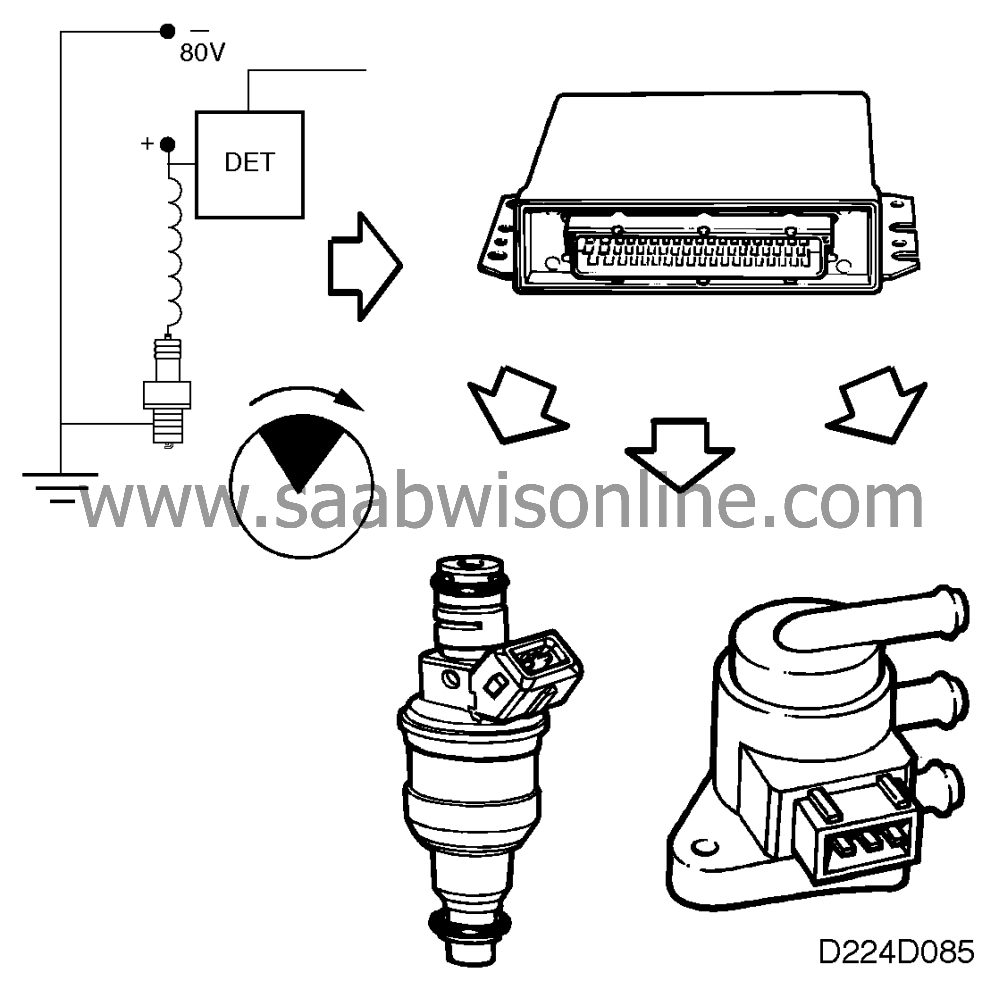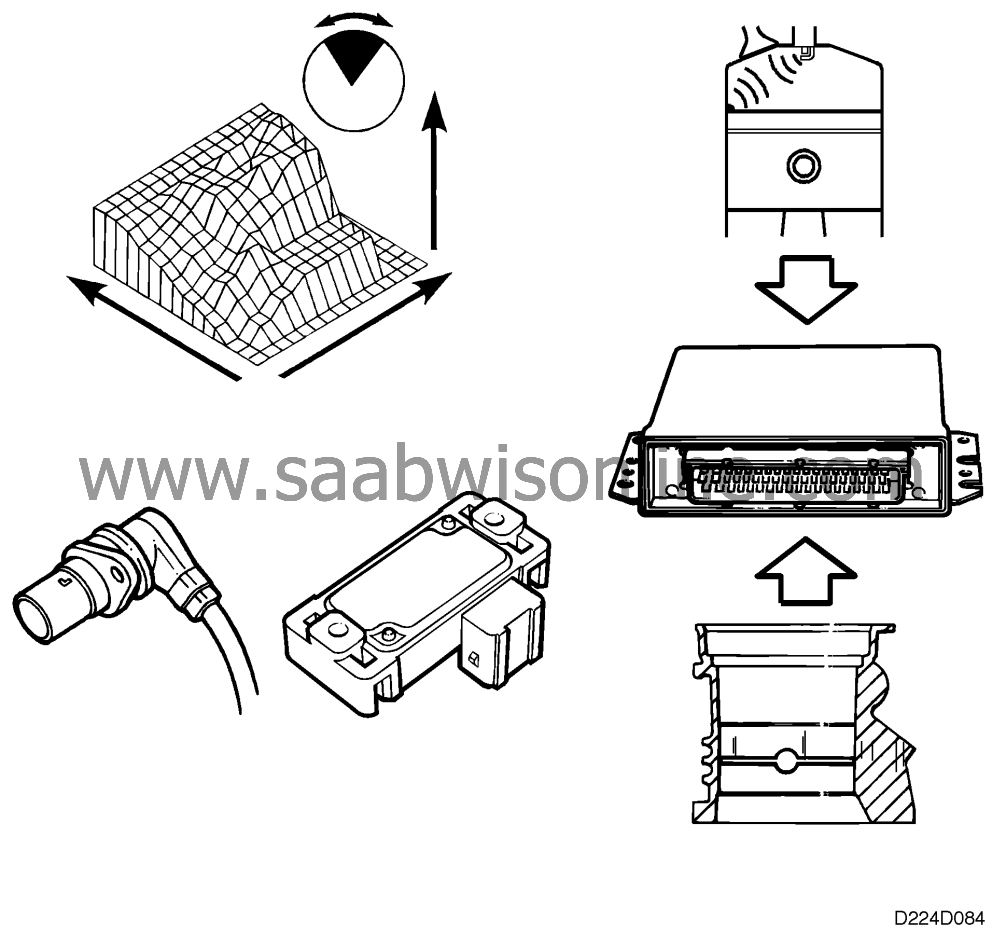Ignition system, knock control
|
|
Ignition system, knock control
|
The Saab Trionic ignition system is of capacitive type. It consists of 4 ignition
coils and electronic circuitry built into the ignition discharge module. The ignition coils are
controlled by the electronic circuitry in the ignition discharge module, which is in turn regulated
via low-level outputs from the ECM.
When the engine is cranked, the ignition system produces a spark on two spark plugs
simultaneously, 1 and 4 or 2 and 3, for a number of consecutive complete combustion
processes. Following this, on the basis of the ionization current flowing through the spark
plugs and signals from the crankshaft position sensor, the system has sufficiently reliable
information for synchronizing spark generation and fuel injection to the correct cylinder.
To improve starting performance when engine temperature is below 0°C
(32°F), the ignition system generates a large number of sparks ("multispark" function)
when the starter motor turns the engine over (10°BTDC - 20°ATDC).
The crankshaft position sensor consists of an inductive sensor mounted in the
crankcase wall of the engine. The rotor is a perforated ring with 58 ribs mounted on the rear
counterweight of the crankshaft.
Ignition timing is calculated by the control module chiefly on the basis of the following
information:
|
•
|
throttle position (idling only)
|
The control module determines whether knocking is occurring in any of
the cylinders by analyzing the ionization currents passing through the spark plugs. If knocking
occurs, ignition is retarded. In the event of substantial ignition retardation or high boost
pressure, a richer fuel-air mixture is also supplied. As a final step, boost pressure is
reduced.





